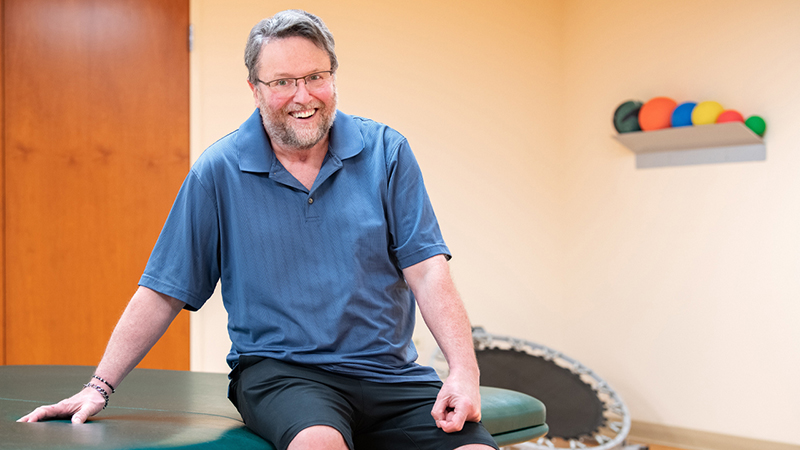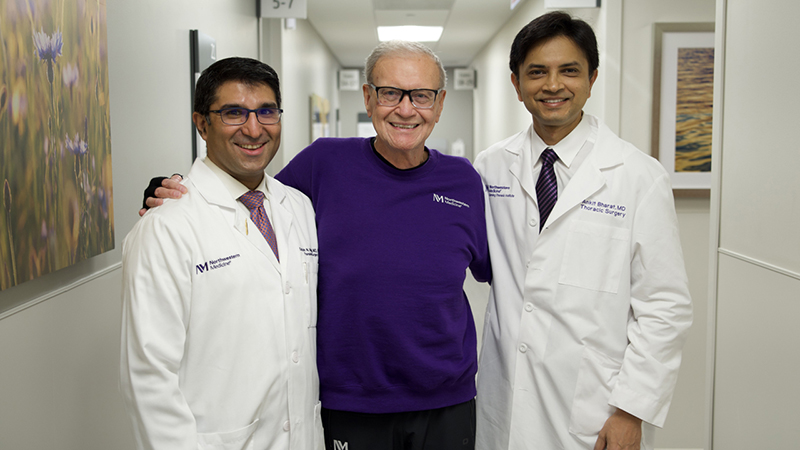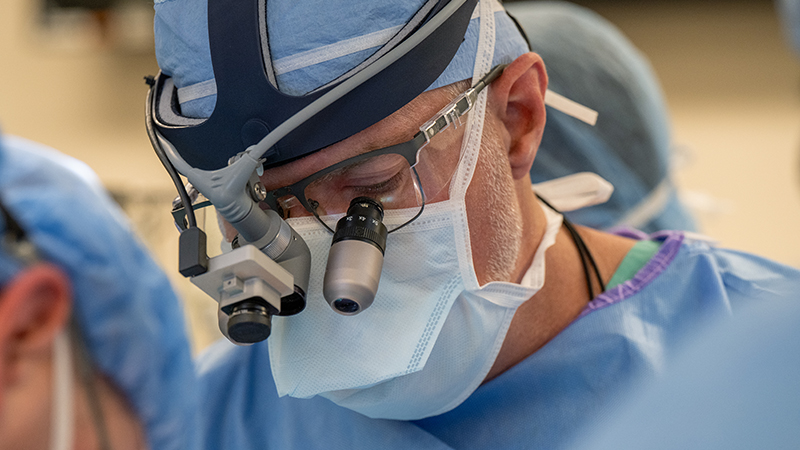A Garden Blooms Thanks to One Physician’s Kind Gesture
Celebrating the Connection Between Physicians and Their Patients
Published March 2024
For Harry Piehl, the summer and early fall blooms of the dahlias in his garden are an annual reminder that he received a second chance at life.
The Algonquin, Illinois, resident was nervous about getting treatment for a heart valve that had become too stiff to open or close properly. But when the 80-year-old became too weak to enjoy his favorite hobby of gardening, he knew something had to be done.
Talking flowers with Dr. Retzer put me at ease.— Harry Piehl, Patient
Harry was experiencing aortic stenosis, which happens when a valve narrows and restricts blood flow to the heart. According to the National Institutes of Health, aortic stenosis affects one in eight people over the age of 75 and is the most common type of heart valve disease.
“Once the aortic stenosis starts limiting independent day-to-day living, there is a problem,” says Elizabeth M. Retzer, MD, interventional cardiologist at Northwestern Medicine Bluhm Cardiovascular Institute at McHenry Hospital. “Harry was so weak he could barely walk out to his garden, let alone tend to it.”
Harry understood the valve needed to be replaced, but he didn’t want open-heart surgery. Instead, Dr. Retzer suggested a transcatheter aortic valve replacement (TAVR), a minimally invasive procedure that replaces the aortic valve when it is narrowed and doesn't fully open, restoring proper blood flow from the heart to the body. The first step was an angiogram, a test that would help Dr. Retzer determine if Harry was a candidate for TAVR. Harry shared that he was nervous about the angiogram, so Dr. Retzer wanted to find a way to put him at ease.
Bulbs and Blooms Help Build Trust
On the day of the test, which also happened to be National Flower Day, Dr. Retzer greeted Harry with two bags of flower bulbs. Dr. Retzer, who comes from a family of farmers, gardens to relieve her own stress and has hundreds of dahlias. She knew the bulbs were the perfect way to connect with Harry.
“She told me, ‘Plant these and when they bloom you will think of me,’” says Harry. “Talking flowers with Dr. Retzer put me at ease, and I was in and out before I knew it.”
Harry was relieved to learn he was a good candidate for the TAVR procedure, and within a few weeks, he was back at Northwestern Medicine McHenry Hospital, this time with much less apprehension.
During the procedure, Dr. Retzer inserted a catheter (flexible tube) through an artery in Harry’s leg and guided it toward his heart. She led a compressed TAVR valve along the catheter until it reached Harry’s diseased aortic valve. Once the new valve was in the right location, Dr. Retzer expanded a balloon on the catheter to secure the TAVR valve and push the diseased valve out of the way. The TAVR valve then took over the job of regulating blood flow from his heart.
“Aortic stenosis is progressive, so patients slowly slow down and don’t realize how bad their symptoms have become,” says Dr. Retzer. “Once you remove the problem, they feel like a million bucks and within weeks are back to doing what they love.”
Transcatheter techniques like those used in TAVR allow the procedure to be performed while the patient's heart is still beating, eliminating the need for a heart-lung machine and an open-heart operation.
“The TAVR valve is made from a cow, so the first thing I did when I opened my eyes was say ‘Moo!’ to my family," says Harry. “The procedure was so easy for me. Getting my teeth cleaned is more uncomfortable.”
Following the procedure, Harry went through a cardiac rehabilitation program at Northwestern Medicine Huntley Hospital to regain his strength. Even before he completed the program, he was feeling well enough to start working in his garden again.
“I was too weak to plant my garden in the spring. My neighbors and friends had to help,” says Harry. “Now when I look at the dahlias blooming, I’m reminded of how Dr. Retzer helped me get back to my life.”







